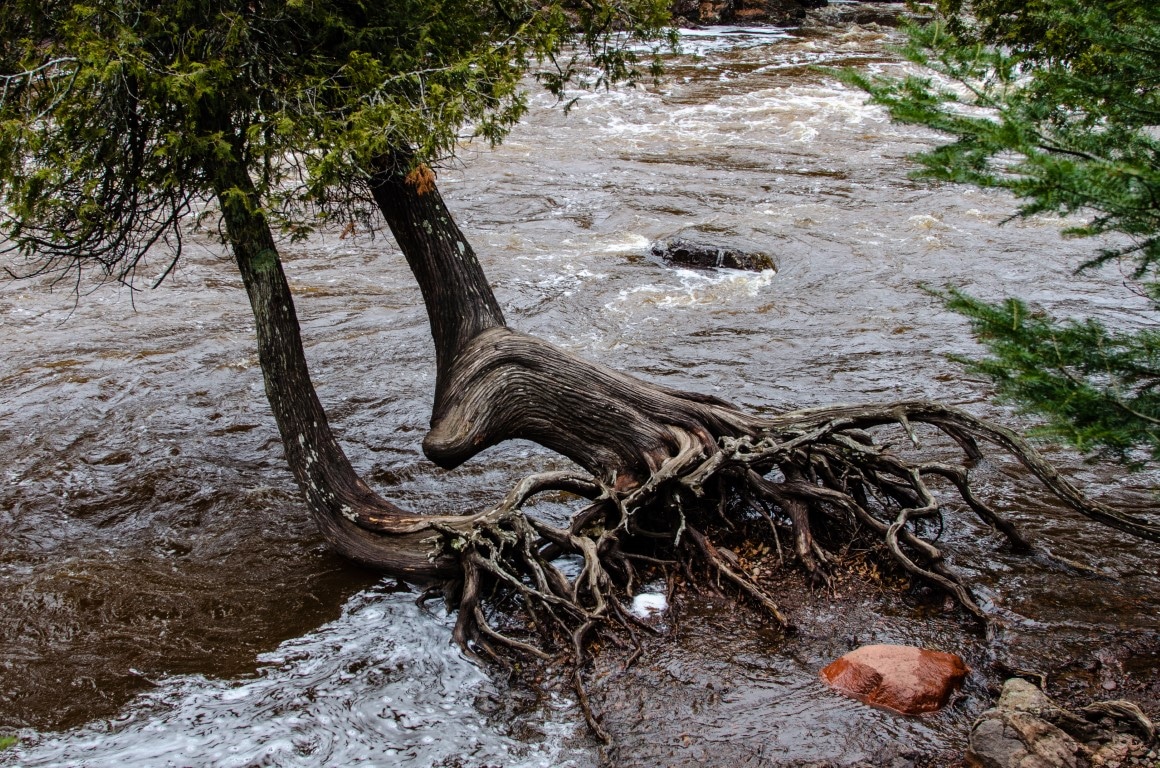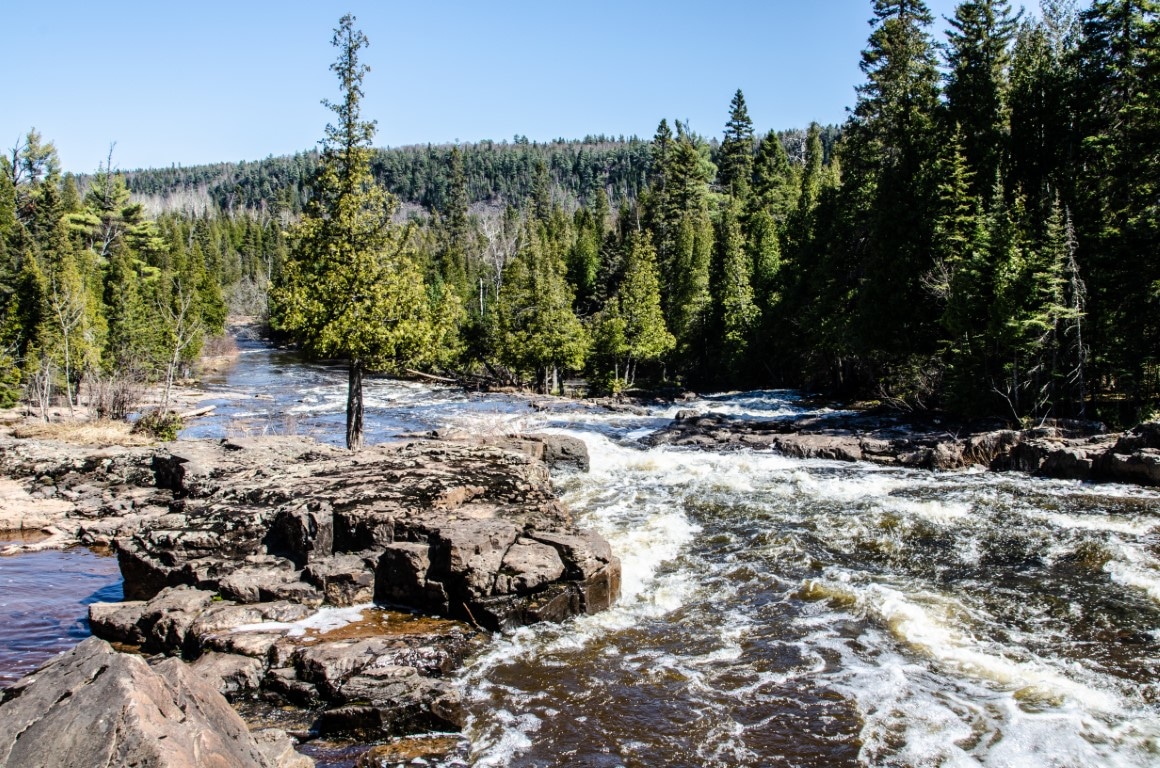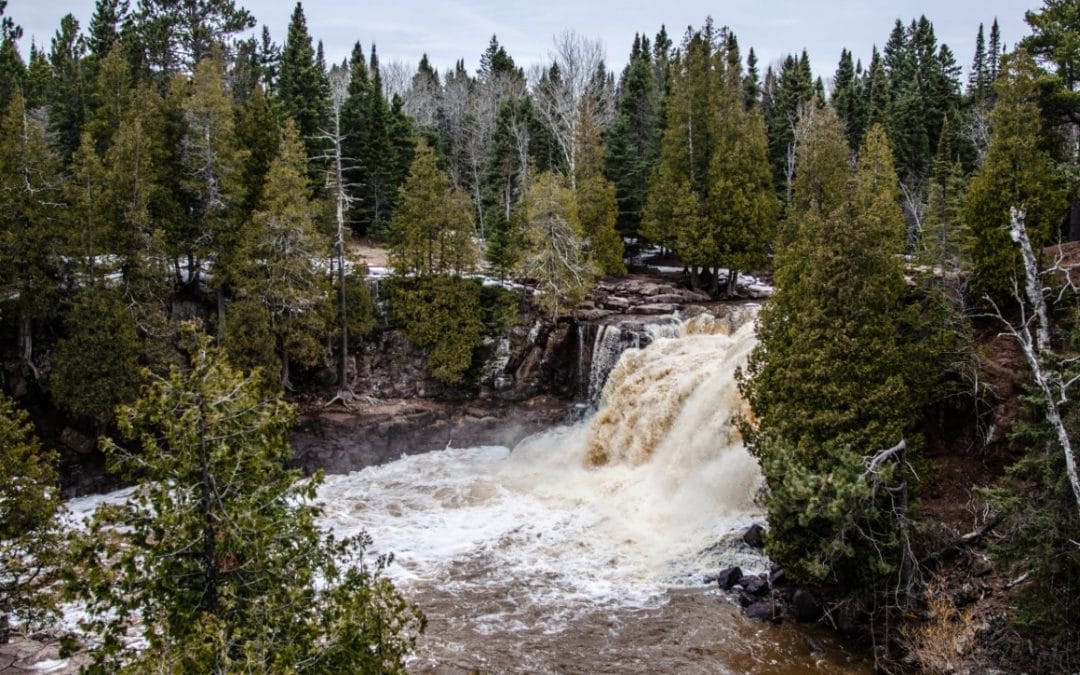Happy Wander Freely Friday! This week, prompted by our river and waterfall explorations, we’ve been learning more about the white cedar tree!
Before the light bright leaves of summer emerge, the cedar trees illuminate the riverbeds of the rivers on the North Shore against a backdrop of darker pines. The white cedar (Thuja occidentalis) is one of several conifer trees that you’ll find in your wanderings in Northern Minnesota, especially on cliffs and near rivers, which gives them some of the best views of the beautifully rugged landscape that we love to explore with you each week.

Built for struggle, these trees can have twisted trunks, and sometimes two stems. Their root system tends to be shallow and spread over a wide area. White cedar roots have the ability to glean moisture from cracks in the rocks.
White cedar is a favorite snack of various wildlife. White-tailed deer will strip the lower leaves. Porcupines chew the lower bark and branches, and squirrels snip away branches with cone clusters and flowers, which lessens the chance of reproduction.

This Minnesota Native is commonly called an arborvitae, which in Latin, means tree of life. Throughout our history, white cedar trees have been used in medicine making. Cedars have strong antifungal properties that can help to repel molds, fungi, bacteria, and viruses both internally and externally. It’s oil is also a natural insect repellant, and immune system booster.
It is these natural qualities that make cedar a favorite for memory chests, as the wood’s natural properties help to protect what is inside.
Cedar does contain strong volatile oils including thujone, that is known to be toxic in large quantities. To be safe, do consult your health practitioner before the use of any natural internal medicine. Cedar trees are also considered sacred by many Native Americans, and like all trees in our area parks, should be treated with the utmost respect.

We find that they make great companions for lunch or a snack, looking over a river valley, enjoying a quick hug, or simply spending time watching the water wend it’s way toward Lake Superior. We recommend you repeat these activities as often as you possibly can! For our next trip out, we’re going to bring along a sketchbook and take some time to become more closely acquainted with these amazing trees.
If you have any cedar tree sketches, we’d love to see them!
Friluftsliv (open-air living) is absolutely the life for us. We hope that you’ll join us in person, soon.
Wishing you a great weekend, full of all things outdoors!


Recent Comments